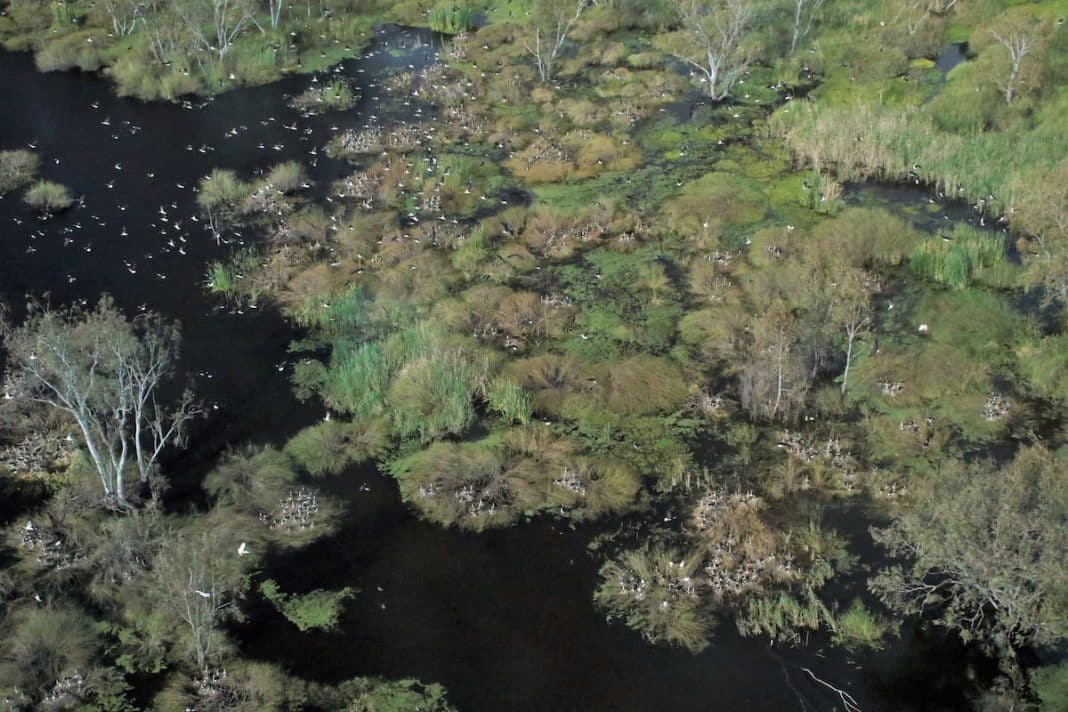With their long necks, reptilian feet and keen eye for food scraps, white ibis just can’t shake their bad reputation as “bin chickens”.
But their cousins, the straw-necked ibis, are turning the family name around amid a breeding boom in eastern Australia’s wetlands.
“They’re sometimes called farmers’ friends because they’re very good at feeding on things like locusts,” said Professor Richard Kingsford, a river ecologist from the University of NSW.
“For years to come we’ll have an army of natural pest destructors out there.”
A large ibis colony was spotted in the Macquarie Marshes, a protected wetland in northwestern NSW, during the annual eastern Australian waterbird aerial survey in October and November.
The count, one of the largest and longest-running wildlife surveys in the world, observes bird numbers across 2000 wetlands in Queensland, Victoria, South Australia and NSW to monitor river health and biodiversity.
In its 40th year, marked by record-breaking floods, scientists from the university and the NSW environment department counted nearly 190,000 waterbirds and observed a spike in breeding.
But there was a decrease in long-term average numbers, with 2022 marking the 11th lowest bird count on record.
Prof Kingsford said the continued decline was due to water being stuck in dams across the Murray-Darling Basin rather than flowing into rivers and wetlands.
Record rainfall forced dams to spill this year, returning water to the plains and bringing birds like pelicans, swans, ducks, straw-necked ibis, spoonbills, egrets and herons with it.
“You can hear these colonies up to a kilometre away. They sound like the ocean, there’s a sort of roar.”
The observation of tens of thousands of waterbirds in the Macquarie Marshes and Lowbidgee wetlands, in southwestern NSW, was significant as those areas have reed beds critical for the survival of the Australasian Bittern, an endangered species.
Prof Kingsford said though waterbird populations were responding well to swathes of fresh water, long-term figures showed decline in both floods and droughts.
The data should inform future planning for dams and the importance of returning water to rivers and the environment.
“Rivers and wetlands are sometimes the forgotten cousins of the environment,” he said.
“We hear a lot about marine systems and land clearing but the rivers and wetlands are probably in worse shape as a result of what we’re doing than any of the other things going on.”



